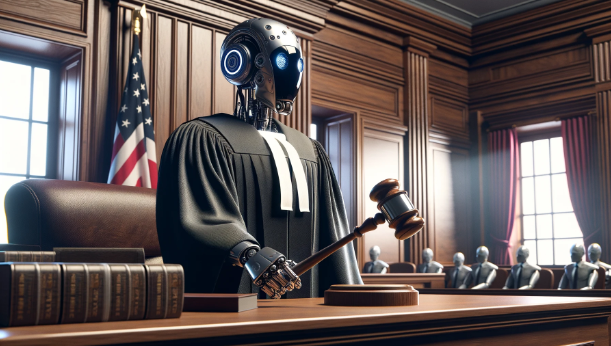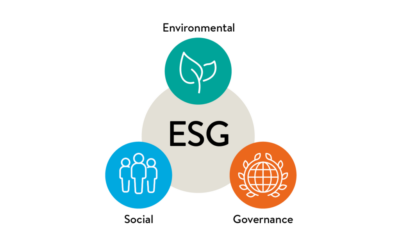Until recently, ‘LLM’ commonly stood for ‘Master of Laws’ (from Latin ‘Legum Magister‘), a postgraduate degree in law. However, with the advent of AI, ‘LLM’ now also refers to ‘Large Language Models,’ a revolutionary branch of artificial intelligence (AI) that generates human-like text using deep learning techniques.
LLMs are trained on vast amounts of text data such as books, articles, and websites. The training allows them to learn patterns, context, syntax, semantics, and even some factual knowledge. By doing so, they develop the ability to produce text on various topics. Like virtually any other sector, LLMs will also impact the legal profession and the way of working of legal counsel. The question is thus not whether or if this will happen, but rather when and how fast – and what the implications will be for the legal profession.
Join me in this blog article in looking at LLMs generally, as well as at their relevance to the legal sector specifically!
Introducing Large Language Models
Capabilities and Applications of Large Language Models
Popular examples of LLMs include OpenAI‘s GPT-3 and GPT-4, Google’s BERT, and Meta’s (formerly Facebook’s) RoBERTa. Some of the incredible capabilities of LLMs include:
- The generation of coherent and contextually relevant text based on given prompts, ranging from creating poetry to coding scripts to writing essays (text generation);
- the comprehension of and ability to respond to natural language inputs, making them useful for applications like chatbots, virtual assistants, and customer service automation (language understanding);
- the translation of text between languages, leveraging their understanding of multiple languages (translation);
- the ability to summarize long documents or articles, extracting key points and presenting concise overviews (summarization); and
- the ability to answer questions by drawing on their extensive training data to provide accurate and relevant information (answering).
The many potential applications of LLMs in everyday use are immediately apparent, and include:
- the use in chatbots and virtual assistants to provide human-like interactions (conversational AI);
- help in drafting articles and other written content (content creation);
- assistance in extracting insights from large volumes of text data (data analysis); and
- provision of personalized tutoring and assistance on various subjects (educational tools).
Looking only at the free, publicly available base versions of ChatGPT, I certainly would have loved to have this kind of AI support when writing essays during my university days. Gone are the days of ploughing through volumes and volumes of books to extract and compare relevant information….
Risks of Large Language Models
Despite all the benefits, the use of LLMs comes with significant risks that users must be aware of when utilizing this technology. Probably most noteworthy are the (inadvertent) perpetuation of biases present in their training data, and the spreading of misinformation on account of the generation of plausible but incorrect information. And there are also the intellectual property concerns around copyright infringement in training data and ownership of LLM output. It needs to be seen how this area will develop considering new regulation.
Given the legal profession’s heavy reliance on written texts, it is easy to see why the use of LLMs will be unavoidable sooner rather than later. This means that the ability of legal counsel to understand and use LLMs in providing quality legal advice to clients is key.
The Usefulness – and Limitations – of Large Language Models in the Legal Field
Legal Document Review
One of the areas where LLMs will be having more and more of an impact is in the review and analysis of legal documents. Legal counsel deal with lengthy and complex contracts, agreements, and other legal documents almost daily, which is extremely time-consuming. LLMs can assist legal counsel in this process by automatically extracting and summarizing key information, identifying relevant clauses, flagging, and possibly even explaining, potential issues. This helps streamline the document review process, saving time and money (think billable hours), and allows legal counsel to refocus their attention on other tasks such as legal analysis, strategy, and negotiation.
Legal Drafting
LLMs can assist in drafting contracts (fantastic, not? I certainly would not have dreamed of this when I was learning to draft agreements after finishing university back in the early 2000s!), but there are important considerations and limitations to keep in mind:
- While LLMs can generate contract drafts, they do not replace the need for legal expertise. Complex contracts in particular require nuanced understanding of the law, context-specific considerations, and jurisdictional knowledge that LLMs do not possess;
- LLMs generate text based on patterns in the data they were trained on, meaning that they might produce errors or include irrelevant information;
- contracts need to comply with specific legal standards and regulatory requirements that can vary widely depending on the jurisdiction and the specific situation. LLMs may not always generate content that fully adheres to these requirements; and
- when using LLMs, especially those provided as cloud services, it’s important to consider data confidentiality and security issues. Sensitive contract information should be handled carefully to avoid data breaches or unauthorized access.
Nevertheless, there is absolutely no doubt that, subject to appropriate scrutiny and review by a lawyer of any agreement drafted by a LLM, this ability adds unbelievable – and, until recently, unthinkable – value.
Legal Research
LLMs can also aid with legal research, provided they are used with caution. LLMs can analyse and summarise complex legal texts such as case reports and statutes, which can enhance research efficiency. However, a danger of LLMs is that they may not have sufficient legal-related training data and may generate inaccurate or misleading texts. It is thus key to be aware that, while responses are usually written just as convincingly as a real answer, there may be issues from minor nuances being incorrect to the entire response being false. By way of example, there have been cases of LLMs fabricating case law when lawyers have used them to draft pleadings. And it is easy to fall into this trap: Just try using a LLM, and you’ll be surprised how by the convincingly and well-drafted responses to almost every single topic, legal or otherwise.
Conclusion
The rapid progress and dominance of LLMs and AI are undeniable. The possibilities are incredible. Yet, at least at this point, the use of LLMs must be carefully monitored to ensure accuracy, fairness, and accountability.
The role of legal counsel will change significantly in the coming years due to the advent of LLMs, which is both exciting and intimidating. However, while LLMs can expedite certain tasks and should definitely be used to increase efficiency and to save costs, they cannot replace the critical thinking, creativity, and intuition of legal counsel. They are thus a powerful tool to be used by, rather than a threat to, legal counsel, and the way they work!
Thoughts, comments or questions? Let me know!
Gundo Haacke, Interim Legal Counsel & Owner of Haacke Commercial Legal Services.
Blog article first published on 22 May 2024.
Image credit: From Doug Austin Blog




